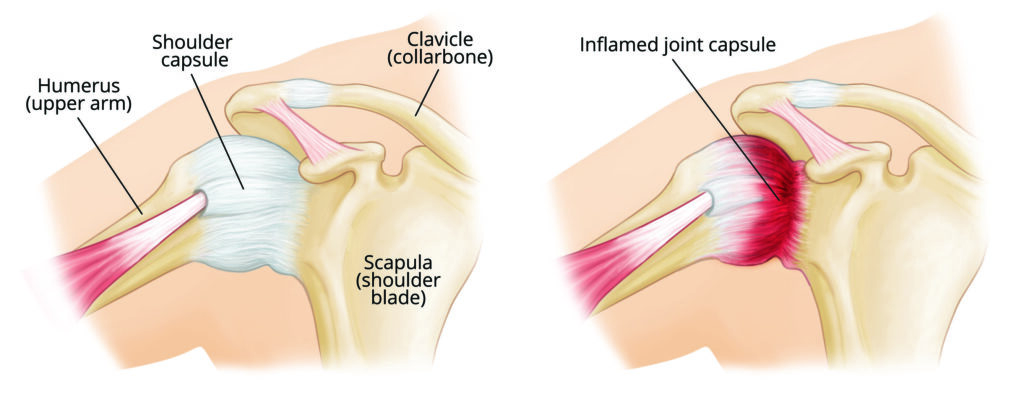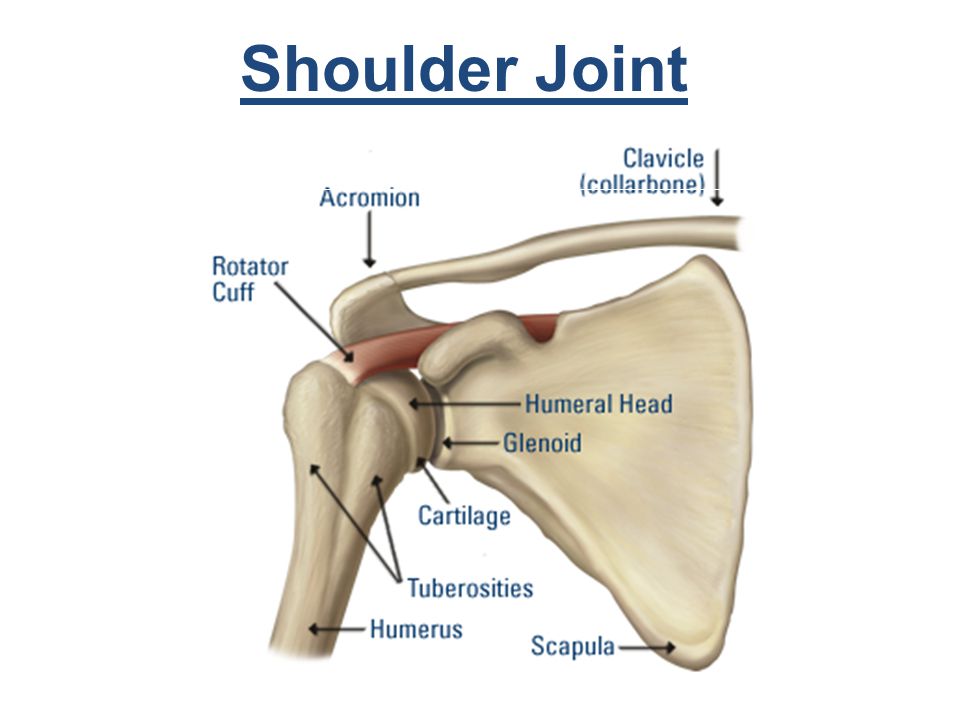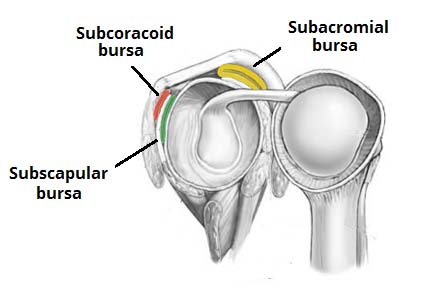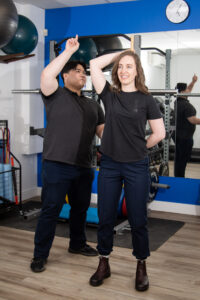Our shoulders are complex joints which have a lot going on in them. The joint is what is known as a ‘ball and socket’ joint, where the ‘ball’ of the humerus (which is the long upper arm bone) sits in the ‘socket’ of the shoulder blade, in a small bowel called the ‘glenoid cavity’. The way the shoulder joint is built is to allow a lot of movement to occur, but at the sacrifice of stability around the joint.
Around the bones which make up the shoulder joint, various muscles, ligament and bursa’s (see below) attach, all interacting together to move your arm and keep the ball of the humerus attached in the socket of the shoulder blade. The shoulder joint is surrounded by a fibrous capsule, called the joint capsule.
With all that going on in the shoulder, it is not uncommon to develop shoulder pain, and below are 3 common reasons why your shoulder may be hurting.
Shoulder bursitis
We’ll start with a reason for shoulder pain that you may not have heard of before: shoulder bursitis.
Within the shoulder, there are several bursa’s, which are fluid filled sacks which sit between muscles and bones, which prevent friction, and therefore potential damage, occurring between the two. However, these bursa can become inflamed, which leads to bursitis (‘itis’ denotes inflammation). The most common bursa to become inflamed is the large subacromial subdeltoid (SASD) bursa.
Bursitis pain normally can come on quickly and can be severe. It is often associated with you completing an activity you don’t normally do (something as innocent as cleaning windows in a house for the first time in a while, or starting a new sport that involves throwing), or can come on slowly overtime and can be associated with a poor posture or poor ergonomic setup at work. Quite often, there is no one event or injury you can think of which has started the pain, which can present in the front, side and back of your shoulder, and even radiate into you arm.
Shoulder impingement syndrome
This is a common type of shoulder pain which has some crossover with shoulder bursitis. Typically, pain is felt when you lift your arm to the side and/or in front of you, and you feel the pain when your arm is lifted to roughly 90 degrees from your body. As your arm goes higher and above your head, typically the pain lessens at this point, but may come back as you pass through that 90 degree area (also known as a painful arc).
When your pain is caused by a shoulder impingement, it means that as you lift your arm up, a muscle and/or a bursa is getting squashed and rubbing between bones in the shoulder joint, which causes it to become inflamed and painful. However, as you lift your arm past the 90 degree painful arc, the muscle/ bursa is no longer getting caught on the bone and the pain stops.
Shoulder impingement is often caused by poor posture, or after an accident to your shoulder where you can’t move it properly for a while.
Adhesive capsulitis (aka ‘frozen shoulder’)
The term ‘frozen shoulder’ is used a lot in the medical world, but unfortunately it is often the incorrect diagnosis for someone who has shoulder pain. However, when someone does have a ‘true’ frozen shoulder, the technical term for this is adhesive capsulitis.
Adhesive capsulitis is a condition where the joint capsule that surrounds the shoulder joint becomes inflamed and ‘sticky’. It thickens and contracts around the shoulder joint, which causes pain and progressively worsening range of movement in the arm. The truth is, we don’t know why adhesive capsulitis starts, but we do know it is common in women between the ages of 40-60, and people who have diabetes can go on to develop it.

Adhesive capsulitis typically has 3 stages, which for some people can take up to 3 years to resolve:
Stage 1 – Freezing Phase – you may notice a mild shoulder pain that comes out of nowhere, which progressively gets worse for no apparent reason. You also may notice a progressive loss of movement in your shoulder, like it is ‘stuck’ and you are just unable to lift it any higher. This phase can last for 6 weeks to 9 months.
Stage 2 – Frozen Stage – during the second stage, the pain symptoms improve and may even completely resolve, but your arm will feel ‘stuck’, and movement may be significantly limited. Typically, this can last 4-6 months
Stage 3 – Thawing Stage – during the third and final stage, the range of motion progressively improves and may return to full movement. This occurs because the joint capsule is healing and loosening up. The thawing stage can take between 6 months to 2 years.
Shoulder pain – so what can I do?
The most important starting point is to get a accurate diagnosis about what the cause of your pain is. Quite often, the above mentioned conditions can have symptoms which can overlap, and there are many other reasons why shoulder pain can occur. Our team of physiotherapists all treat shoulders on a daily basis, and are able to help you diagnosis your shoulder problem and start completing appropriate treatment to help resolve your shoulder problems. Physiotherapy can help with all of the above mentioned conditions, and many others as well, so if you are ready to start your shoulder recover, please call our clinic at 250-493-1152 if you need more information, or book online by clicking here








